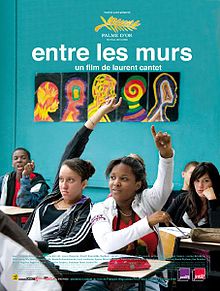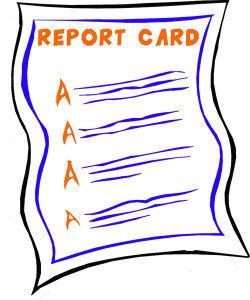(Update: 8/13/21: Unfortunately, after six years many of the links in this unit are no longer working, including the Languages Online Activities. An updated Bienvenue unit is available here: https://www.teacherspayteachers.com/Product/Bienvenue-dans-la-classe-de-Francais-A-Unit-IPA-for-Novice-Low-Students-6942148)
In planning for the upcoming year, I really struggled with how to approach my introduction to French 1. I have so many goals for these students, including:
- I want to encourage the natural excitement that new learners have.
- I want them to realize that language learning is fun.
- I want them to understand that they are responsible for their own learning.
- I want them to realize that they already have skills that they need to understand French resources.
- I want to move them to start learning some aspects of the target culture AND (most importantly)
- I want to help them achieve a Novice Low level of proficiency.
With these goals in mind, I designed the first unit as a sequence of lessons in which I would present a few basic words and phrases and then the students would complete a series of learning stations designed to help them acquire the vocabulary. By using learning stations as the primary vehicle for delivering this instruction, I hope to create a sense of self-efficacy in my students as well as provide multiple pathways to developing their emerging language skills. In addition, this lesson design will allow any students who miss the first few days (a common occurrence due to schedule changes, summer vacations, etc.) to work independently to make up missed lessons. Lastly, using learning stations allows me to incorporate games and manipulatives that engage my students.
On the first day of class, the students will get an activity packet (French1unit1packet) and I’ll share this tentative agenda (french1unit1agenda) via Google docs. I’ve designed each learning station to take about 15 minutes, so in each 48-minute period, I will begin by spending a few minutes introducing or reviewing the vocabulary with the whole class, have the students complete two stations, and then conclude with either a short whole class activity, such as a video, or a formative assessment (if it’s the second day of the lesson). Because I haven’t used these particular stations yet, I’m not sure about the timing. If I find that the stations are not taking 15 minutes, I will modify the schedule accordingly. Some of the reading activities may take longer than 15 minutes, so I will encourage the students to finish them when they have time at other stations. Many of the computer stations are long, too, so I will encourage the students to work on uncompleted activities at home.
Here’s a quick explanation of the stations I’ve designed for each lesson, as well as links to some of the materials I’ve created. .
Lesson 1: Les Salutations
Computer: Students will complete a series of interactive exercises to practice greetings.
Speaking: Students will practice two conversations, one formal and one informal.
Game: Students will play Memory to match French and English greeting words. Here’s a template (Greetings memory cards)
Writing: Students will write the conversations from the Speaking station.
Lesson 2: L’Alphabet
Computer: Students will complete a series of interactive exercises to practice recognizing the letters of the alphabet.
Speaking: Students will dictate names to a partner, who will write them on a whiteboard.
Reading: Students will be given several authentic articles about forest animals and will fill in a table with cognates and other words that they can figure out based on context clues.
Game: Students will play an authentic board game that I purchased several years ago in France.
Lesson 3: Comptez à 10
Computer: Students will complete a series of interactive exercises to practice the numbers 1-10.
Speaking: Students will 1) Dictate numbers to each other, 2) Play a loto game ( ABC_123 Loto )and/or 3) Play Memory using regular playing cards.
Reading: Students will complete an authentic color by number.
Game: Students will play Go Fish with regular playing cards.
Lesson 4: Comptez à 30
Computer: Students will complete a series of interactive exercises to practice the numbers 1-30.
Speaking: Students will 1) Practice dictating numbers using a whiteboard, 2) Quiz each other using purchased flashcards, and 3) Play a guessing game.
Writing: Students will practice writing out the numbers by filling in a crossword puzzle (Crossword 1-30)
Game: Students will play Loto, Memory (Game Cards 1-30), and Go Fish. (The same cards are used for both Memory and Go Fish.)
Lesson 5: Présentations et Géographie
Computer: Students will complete a series of interactive exercises to practice asking and giving names and ages.
Speaking: Students will practice a conversation which incorporates several of the skills attained in the introductory unit.
Writing: The students will write out the same dialogue that they practiced orally.
Reading: Students will read an authentic article about France (France) and complete a comprehension guide. (This article can also be accessed through this link: http://www.lepetitquotidien.fr/fiche-expose/la-geographie-de-la-france/carte-d-identit-de-la-france-f1015)
Lesson 6: Le Calendrier
Computer: Students will complete a series of interactive exercises to practice calendar vocabulary.
Speaking: The students will complete a pair information gap activity (Famous French Birthdays )in which they ask each other for the birthdate of several famous French people.
Reading: Students will read an article about French holidays and complete a comprehension guide.
Game: Students will complete a pair activity in which they give each other clues to enable each other to fill in missing words on a crossword puzzle (xw A, xw B) .
Integrated Performance Assessment #1
As the agenda shows, I’m going to give the students their first performance assessment at this point. Although there are still a few lessons to go in this unit, I wanted my students to have performance grades on their interim progress reports, so I’ve included the short assessment described in the agenda. I plan on sharing this assessment in a future post.
Lesson 7 : Dans mon sac à dos
Computer: Students will complete a series of interactive exercises to practice school supply vocabulary.
Speaking: Students will 1) Ask each other whether they have pictured items and either circle or cross out each picture and 2) Play Memory or Go Fish (I’ll use the pictures from the packet to make pairs of cards).
Writing: Students will list items in their backpack and complete a crossword puzzle (sac a dos xw, crosswordpuzzle) .
Game: Students will play Pictionary and Hangman with new and previously-learned words.
Lesson 8: C’est comment? (Students will complete all 4 stations in one day—they’re short.)
Note: Due to the nature of the teacher-created activities, which require the use of color, I’m not able to share them here.
Computer: Students will complete a series of interactive exercises to practice colors.
Game: Students will play teacher created Loto game.
Speaking: Students will play Pictionary with colored markers.
Writing: Students will fill out a crossword puzzle.
Lesson 9: Dans ma salle de classe
Computer: Students will complete a series of interactive exercises to practice classroom object vocabulary.
Game: Students play Pictionary and Hangman.
Speaking: Students complete pair matching activity (classroom matching )
Writing: Students write sentences describing classroom.
As the agenda shows, I’ve planned one review day and then it will be time to implement the 2nd IPA of the year. I’ll share this assessment in a later post.
Note to Readers: All of these materials are newly-created and haven’t been used with students. In fact, I haven’t even printed them for my own use yet. As always, please proofread carefully!
(Photo Credit: http://www.rvrradio.fr/-Bienvenue-chez-nous-49-.html)
Bonne Rentrée à Tous!










